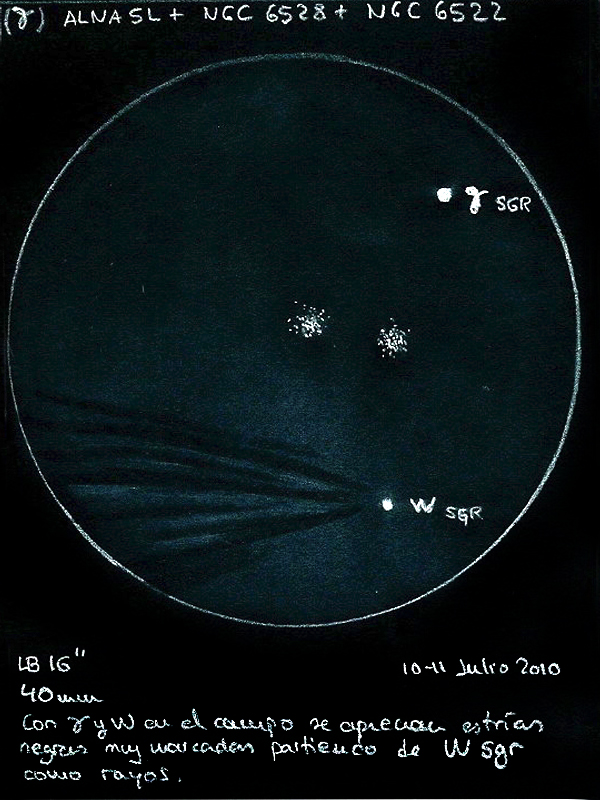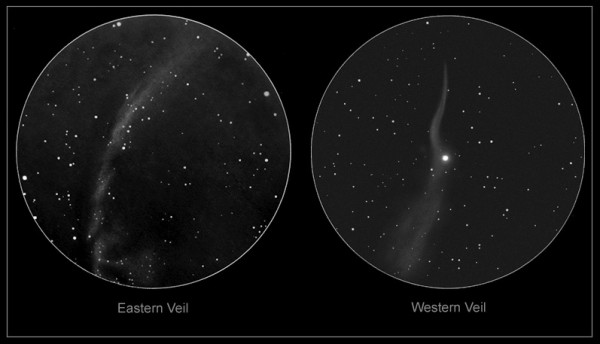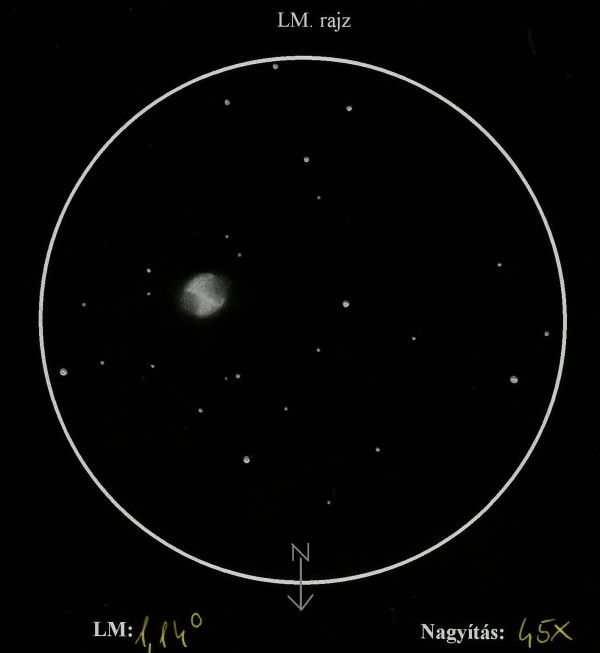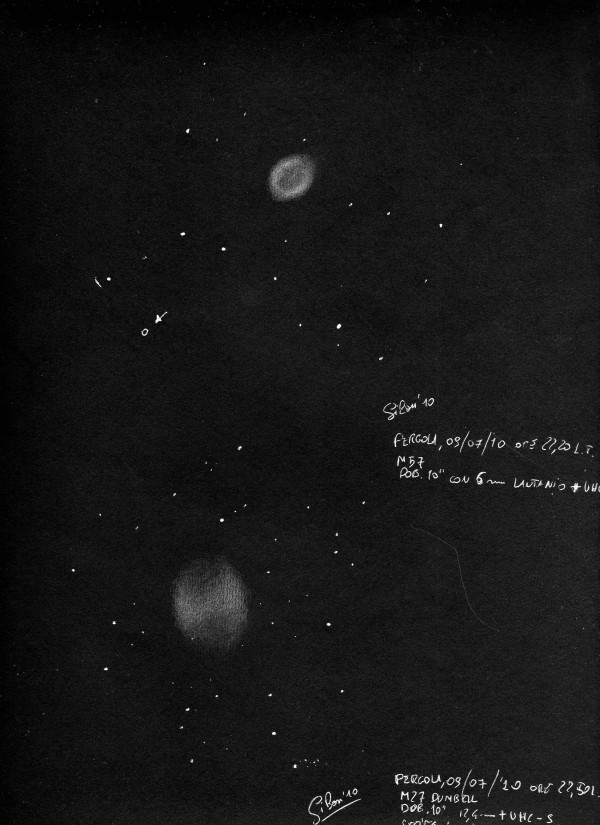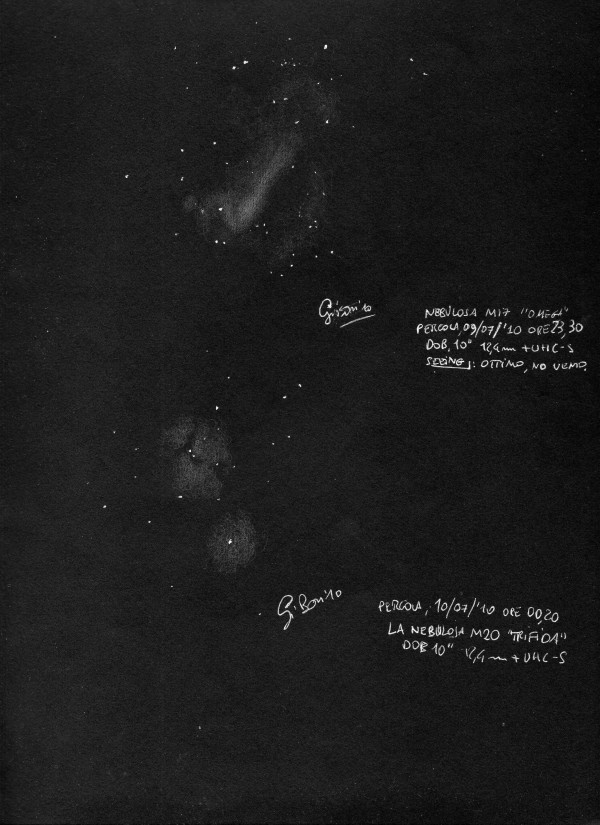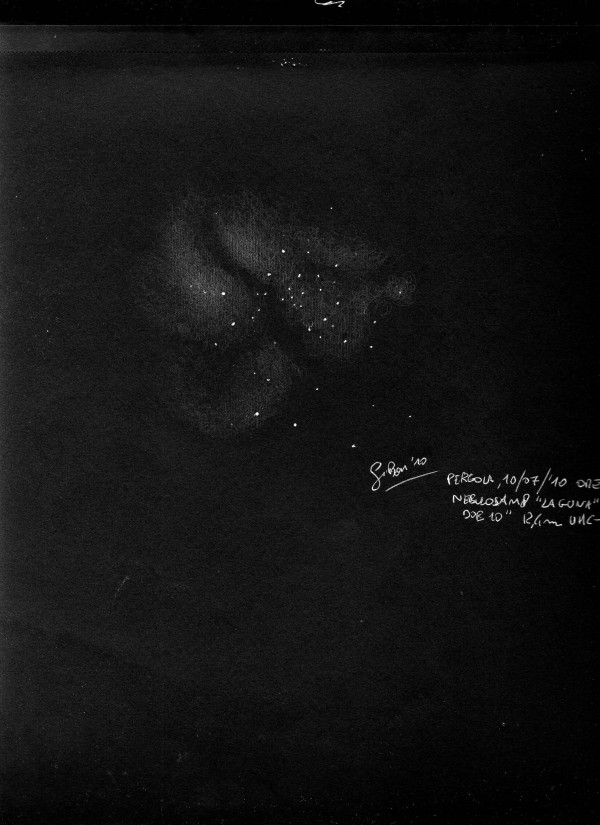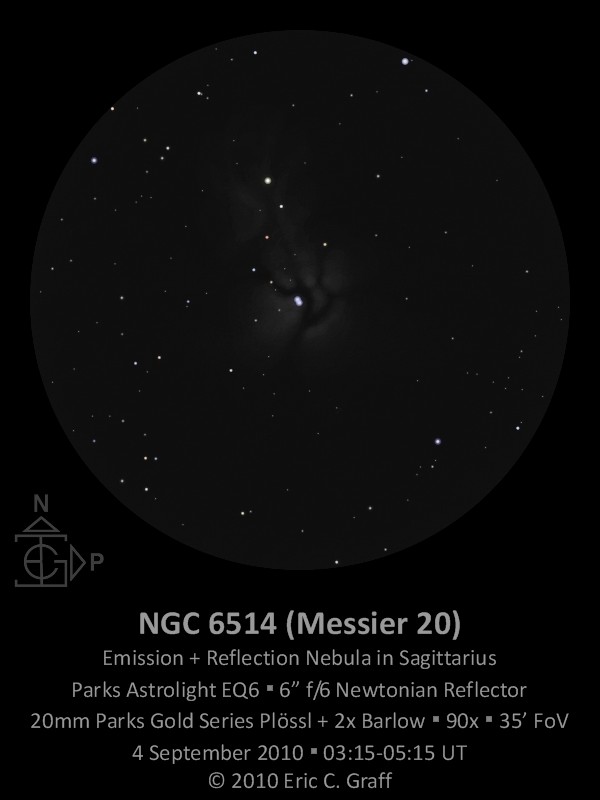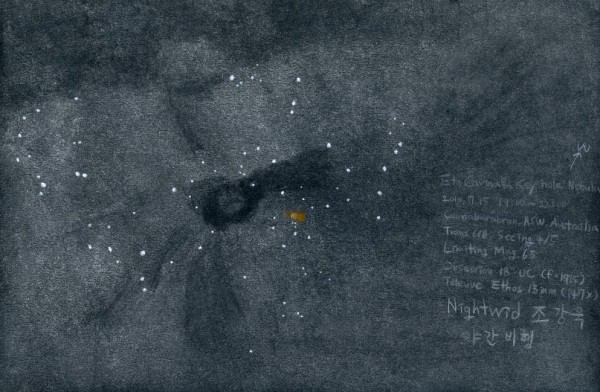Observation Notes:
In my ongoing effort to refine my observation and sketches of M42/43, I made a new sketch on January 14. I used most of the previously sketched star field as a starting point so I could spend more time on the nebula. Working within a larger 6 inch circle really helped. The minty green color was striking throughout the nebula, particularly around the trapezium. As for structure, the sketch pretty much tells the story, except for the fact that there was a lot more detail to be squeezed out. I can tell that I’ll be coming back again and again for more.
Object Information:
The Orion Nebula lies 1500 to 1600 light years away and is the brightest diffuse nebula in the sky. It is the brightest portion of a much larger cloud of gas and dust which extends over an area of 10 degrees. This cloud also contains Barnard’s Loop, the Horsehead Nebula and the reflection nebula around M78. The brilliant M42 extends to a diameter of 30 light years.
The incredible complexity of the nebula is so great that various aspects of it have been given some creative names. Some of the more prominent are: Fish’s Mouth = the dark lane extending from the north into the brightest portion of the nebula
Wings = the bright regions to both sides
Trapezium cluster = the bright cluster of stars pointed to by the Fish’s Mouth
The Sword = the wing extension to the south on the east
The Thrust = the bright nebulosity below the Trapezium
The Sail = the fainter western extension
The Hubble Space Telescope discovered dark, protoplanetary discs called Proplyds around the region of the Trapezium. These investigations have shown that the blazing radiation of the Trapezium stars is eroding the Proplyds so that the lower-mass stars forming there may not maintain enough material to form planetary systems.
M42 was discovered by Nicholas-Claude Fabri de Peiresc in 1610, but it seems strange that its nebulosity was not discovered sooner, since it is easily visible to the naked eye. Charles Messier cataloged it in 1769.
Subject M42 (NGC 1976) / M43 (1982)
Classification Diffuse Nebulae
Position Orion: M42: [RA: 05 35 17.2 / Dec: -05 23 27]*
M43: [05 35 31.3 / Dec.: -05 16 03]
Size* M42: 90′ x 60′ / M43: 20′ x 15′
Brightness* M42: 4.0 bMag / M43: 9.0 bMag
Date/Time January 14, 2010 – 10:00 AM
(January 15, 2010 05:00 UT)
Observing Loc. Cinder Hills Overlook, Sunset Crater National Monument, AZ
Instrument Orion SkyQuest XT8 Dobsonian (203 mm dia./1200 mm F/L)
Eyepieces/Mag. 32 mm (37.5X)
Seeing 5/10 Pickering
Transparency Mag 7+ NELM
*Sources DSS; NGCIC Project; SEDS
*Based on published data.
Jeremy Perez

